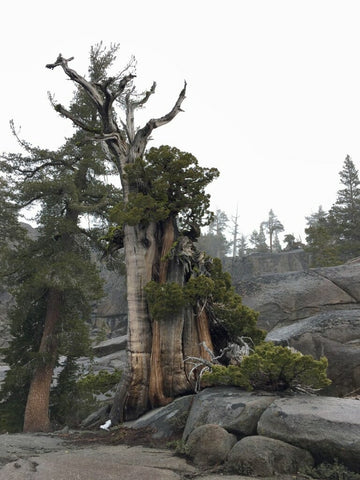SUBSCRIBE TO OUR NEWSLETTER FOR 10% OFF YOUR NEXT ORDER
Too Straight For a Juniper Bonsai?

In bonsai, Junipers are supposed to be twisty and contorted. Where did that rule come from? What makes one tree better than another in bonsai? Is it a convention or is it a fact? Bonsai come in an almost infinite variety of shapes such that there is room for trees that have different feelings. In a previous post I restyled a yamadori-style Kishu Chinese juniper. Yamadori-style is commonly taken as a description of how one would duplicate the best qualities of a yamadori juniper in a piece of material that is grown by the bonsai artist. And, for bonsai purposes the consensus is that the crazier the twists and turns in a yamadori juniper the better. But junipers in the wild grow in a lot of different shapes, and I find many of the straight ones to be just as interesting as the twisting ones.

A hill full of Sierra junipers. Among them are small twisty ones right next to large straight ones. What makes one of these a better bonsai model than another? Is it the shape of the trunk, or the overall character?

A large Sierra juniper looking like a classic juniper bonsai. The tree is about six feet tall.

A much larger Sierra juniper that has a relatively straight trunk, but there is still a lot of interest in the deadwood and the branching. The tree is about 25 feet tall. Is this a good model for a bonsai?
For this juniper, which is nearly a formal upright, the inspiration has to come not from the twisting sinuous Sierra junipers of California’s Sierra Nevada, but instead from the trees that perhaps are only a dozen yards away from those twisting trees and have straight trunks but contain just as much character in the branching. For the last 10 years I’ve been adding details and character to this tree through repeated styling and cutback.

After the initial styling of the tree from nursery stock in 2005. I was going for a very sparse looking composition, similar to high mountain conifers like Juniper and Red Fir.

In 2008 the top had already filled out but the tree remained nice and narrow. I added some small deadwood branching. The delicate jin don’t last long.
While the initial styling in 2006 had been to my liking, it wasn’t long before the tree started to resemble a redwood tree more than a high mountain tree. Still, it took me a long time to decide to finally style it again like the mountain trees that I love. By October of 2014 despite more than a couple cutbacks and restyles the tree had gained a couple inches in height and had no significant deadwood. It seemed logical to make the tree look more like a bonsai again, less like a bush. I removed the entire top, leaving a bunch of short jin’d branches and reduced the branching to emphasize a windswept look.

October 2014 styling sequence.
After the October 2014 restyle the tree was quite sparse. I set it on the bench again to grow until there was significantly more foliage.

September 2015, before cleaning up. The tree has been growing since last October with nothing but water, fertilizer, and sun.
The tree [pictured at the top of this article] now stands about 10″ tall and captures the feeling of a juniper growing on a windswept rock outcropping. In the future I may allow the top portion of the foliage to form a slightly larger mass to the right, lending more emphasis to the story of a windy habitat. So, does this look like a juniper, or is it too straight?

